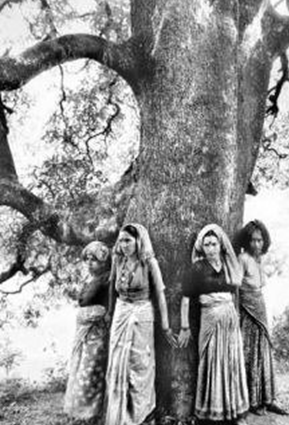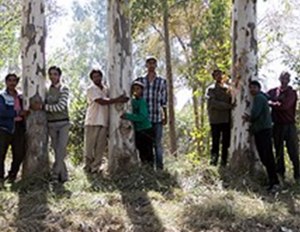Talk:The Chipko Movement: Tree Hugging in Uttarakhand, India
By Vishal Agarwal
When trees are cut down in mountainous regions, the soil on the slopes becomes loose and unstable. During rainfall, this loosened soil is easily washed away, leading to the loss of fertile topsoil essential for agriculture. As a result, crops fail to grow properly, and food shortages follow. The weakened slopes also become prone to landslides, which can destroy villages and claim lives. When such landslides crash into rivers, they can cause severe flooding.
A similar ecological disaster occurred in the early 19th century in the hilly state of Uttarakhand in northern India, where more than ninety-five percent of the population follows Hindu traditions.
Distressed by the relentless felling of trees by timber merchants, the people of Uttarakhand initiated the Chipko Movement. This movement began under the leadership of women. Whenever loggers arrived to cut trees, groups of village women would encircle and embrace them, preventing their destruction. The first major protest of this kind took place in 1974.
Gradually, the practice spread from village to village as men, women, and children joined hands to protect the forests. Their peaceful resistance symbolized a deep sense of kinship with nature, as villagers began treating trees as living companions deserving protection.
The sustained effort eventually led the government to issue an order prohibiting tree felling across the entire region for several years. Within fifteen years, the hills of Uttarakhand were once again lush and green.
The Chipko Movement became a global symbol of environmental activism and inspired similar “tree-hugging” movements around the world, demonstrating how collective, non-violent action rooted in respect for nature can bring ecological restoration and social harmony.


